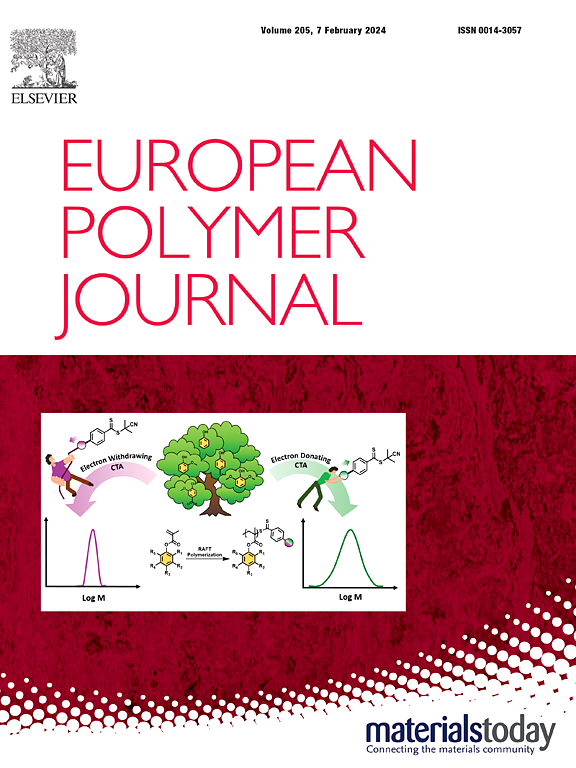Poly(ButenOx)-derived molecularly imprinted polymers for rapid quantification of propylparaben: Enhancing selectivity and sensitivity with thiol-ene chemistry
IF 5.8
2区 化学
Q1 POLYMER SCIENCE
引用次数: 0
Abstract
Endocrine-disrupting compounds, particularly parabens, are increasingly recognized as significant environmental contaminants, with implications in the proliferation of breast cancer and marine toxicity. Consequently, the rapid quantification of these compounds in various environmental samples is crucial for effective monitoring and environmental assessment.
This study introduces a novel analytical method for the quantification of propylparaben (PrP) using selective preconcentration on molecularly imprinted polymers (MIPs), followed by direct on-line analysis using flowing atmospheric-pressure afterglow mass spectrometry (FAPA-MS). The MIPs were synthesized from poly[2-(3-butenyl)-2-oxazoline] (poly(ButenOx)), a member of the poly(2-oxazoline) class of organic polymers. This polymer contains double bonds that can be functionalized via thiol-ene click chemistry. Among the various functionalization procedures tested, the introduction of 3-mercaptopropionic acid yielded MIPs with the highest adsorption capacity for PrP.
The application of these MIPs in the FAPA-MS quantification of PrP significantly improved the detection limits by two orders of magnitude compared to direct solution analysis. Furthermore, the analysis of real river water samples spiked with PrP demonstrated high accuracy of the developed analytical procedure.
This study highlights the versatility of poly(2-oxazoline)-based materials in the preparation of selective adsorbents and their excellent applicability in the rapid quantification of hazardous compounds when coupled with the FAPA-MS analytical system.

求助全文
约1分钟内获得全文
求助全文
来源期刊

European Polymer Journal
化学-高分子科学
CiteScore
9.90
自引率
10.00%
发文量
691
审稿时长
23 days
期刊介绍:
European Polymer Journal is dedicated to publishing work on fundamental and applied polymer chemistry and macromolecular materials. The journal covers all aspects of polymer synthesis, including polymerization mechanisms and chemical functional transformations, with a focus on novel polymers and the relationships between molecular structure and polymer properties. In addition, we welcome submissions on bio-based or renewable polymers, stimuli-responsive systems and polymer bio-hybrids. European Polymer Journal also publishes research on the biomedical application of polymers, including drug delivery and regenerative medicine. The main scope is covered but not limited to the following core research areas:
Polymer synthesis and functionalization
• Novel synthetic routes for polymerization, functional modification, controlled/living polymerization and precision polymers.
Stimuli-responsive polymers
• Including shape memory and self-healing polymers.
Supramolecular polymers and self-assembly
• Molecular recognition and higher order polymer structures.
Renewable and sustainable polymers
• Bio-based, biodegradable and anti-microbial polymers and polymeric bio-nanocomposites.
Polymers at interfaces and surfaces
• Chemistry and engineering of surfaces with biological relevance, including patterning, antifouling polymers and polymers for membrane applications.
Biomedical applications and nanomedicine
• Polymers for regenerative medicine, drug delivery molecular release and gene therapy
The scope of European Polymer Journal no longer includes Polymer Physics.
 求助内容:
求助内容: 应助结果提醒方式:
应助结果提醒方式:


